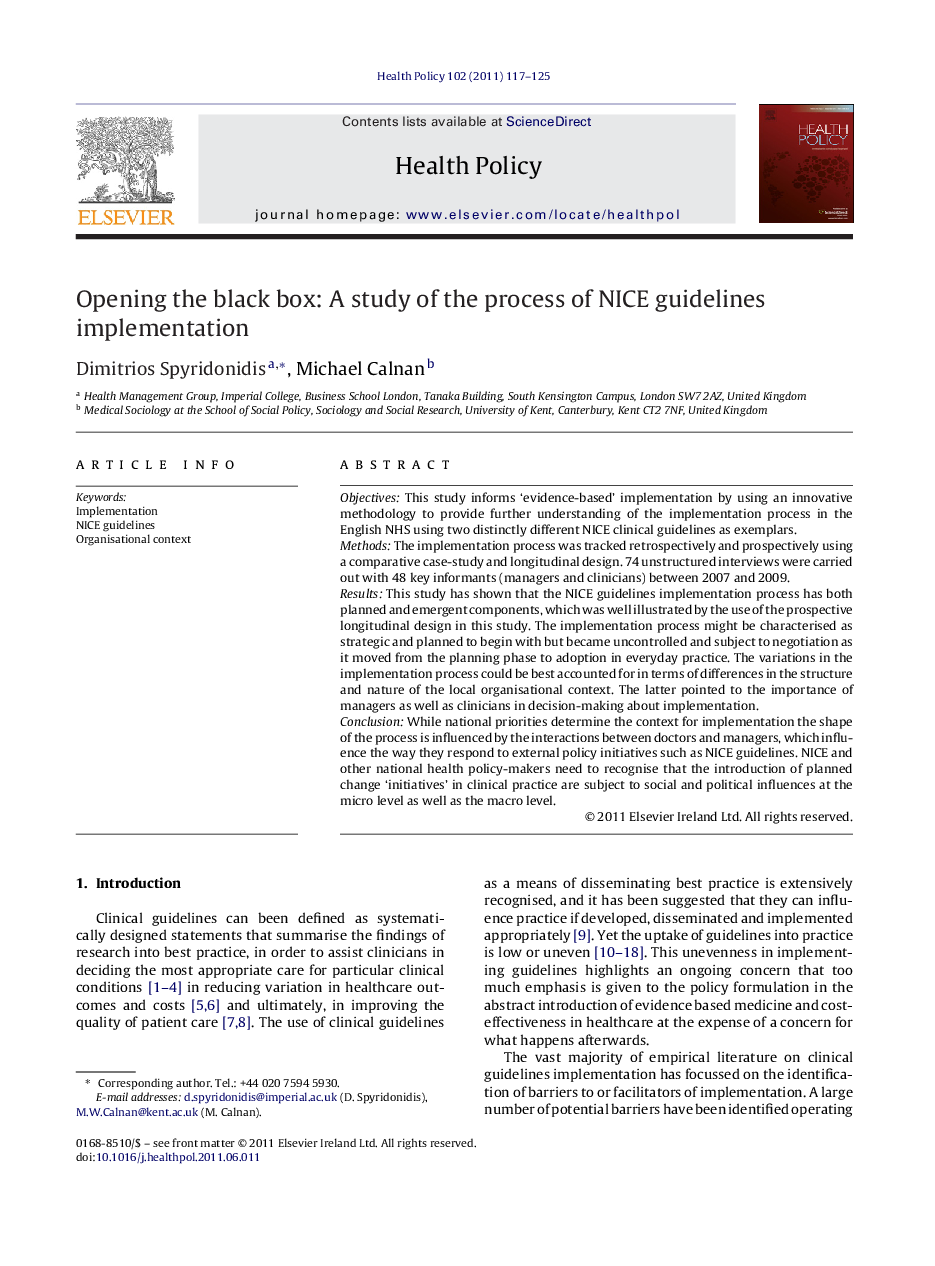| Article ID | Journal | Published Year | Pages | File Type |
|---|---|---|---|---|
| 4198108 | Health Policy | 2011 | 9 Pages |
ObjectivesThis study informs ‘evidence-based’ implementation by using an innovative methodology to provide further understanding of the implementation process in the English NHS using two distinctly different NICE clinical guidelines as exemplars.MethodsThe implementation process was tracked retrospectively and prospectively using a comparative case-study and longitudinal design. 74 unstructured interviews were carried out with 48 key informants (managers and clinicians) between 2007 and 2009.ResultsThis study has shown that the NICE guidelines implementation process has both planned and emergent components, which was well illustrated by the use of the prospective longitudinal design in this study. The implementation process might be characterised as strategic and planned to begin with but became uncontrolled and subject to negotiation as it moved from the planning phase to adoption in everyday practice. The variations in the implementation process could be best accounted for in terms of differences in the structure and nature of the local organisational context. The latter pointed to the importance of managers as well as clinicians in decision-making about implementation.ConclusionWhile national priorities determine the context for implementation the shape of the process is influenced by the interactions between doctors and managers, which influence the way they respond to external policy initiatives such as NICE guidelines. NICE and other national health policy-makers need to recognise that the introduction of planned change ‘initiatives’ in clinical practice are subject to social and political influences at the micro level as well as the macro level.
